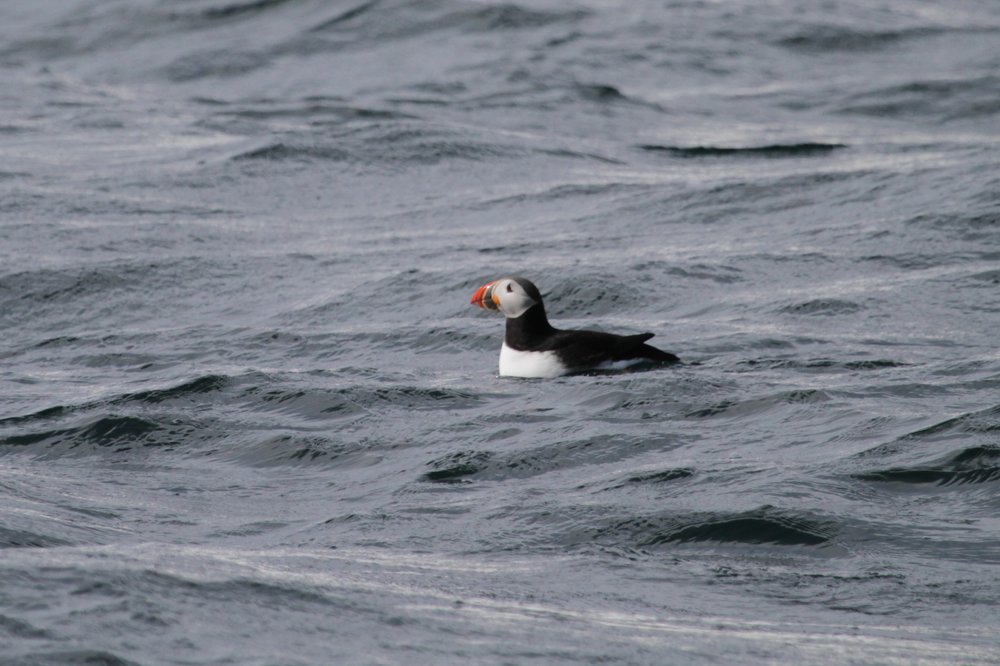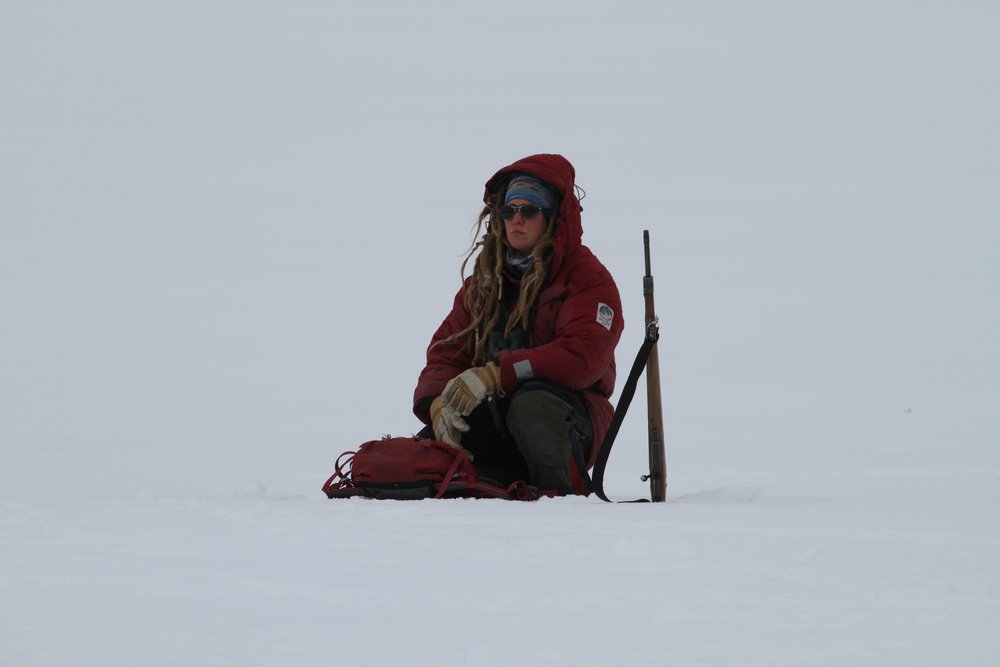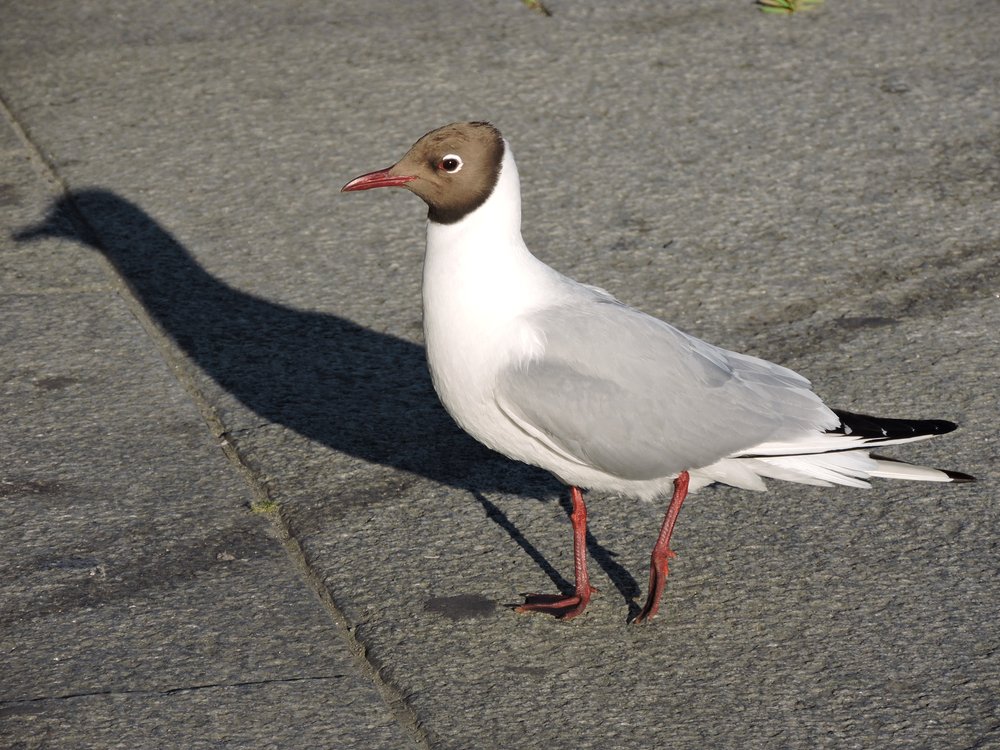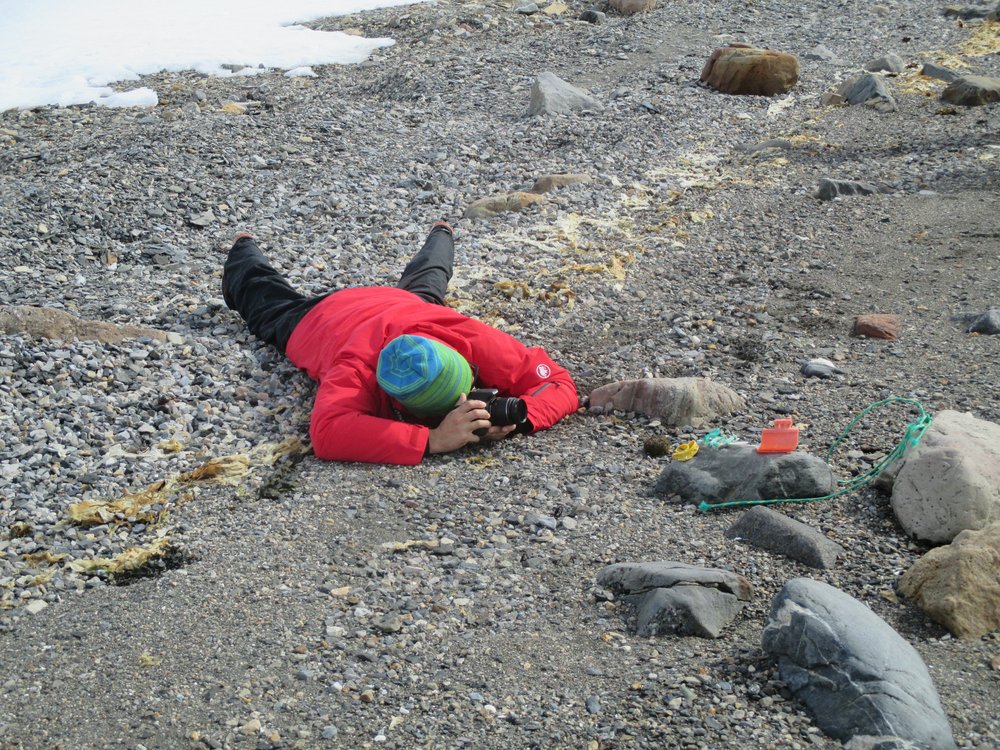 Bogdan photographing Arctic beach junkThe pleasure of picking up garbage (if I can call it a pleasure) is that you can do it anywhere, even in the Arctic. On our second day on the Barkentine ship Antigua we woke in a ice-skate smooth bay named Safe Harbor. We loaded into the zodiacs and were transported across to land. There, the guides had marked out a safe zone, Sarah standing tall at the top of the hill, rifle at hand, binoculars scanning into the distance for polar bear.
Bogdan photographing Arctic beach junkThe pleasure of picking up garbage (if I can call it a pleasure) is that you can do it anywhere, even in the Arctic. On our second day on the Barkentine ship Antigua we woke in a ice-skate smooth bay named Safe Harbor. We loaded into the zodiacs and were transported across to land. There, the guides had marked out a safe zone, Sarah standing tall at the top of the hill, rifle at hand, binoculars scanning into the distance for polar bear.
The beach where we landed was small gray pebbles, leading into a long bank of soft, grainy snow. The 26 artists with whom I was travelling (with The Arctic Circle) then all went about experiencing the Arctic: taking photographs, recording sounds, digging in the snow, lying in the snow, drawing, and writing. There was Bogdan Luca, gathering the few pieces of plastic that littered the shore. He placed them together, took photographs. I pocketed the two pieces I found—a green plastic cap and a hefty piece of white plastic. Both fit neatly in my pocket. I thought of the bags and bags of garbage I haul out of the Tivoli Bay on the Hudson River, and this seemed nothing. But it also felt too much: should this landscape not be pristine?
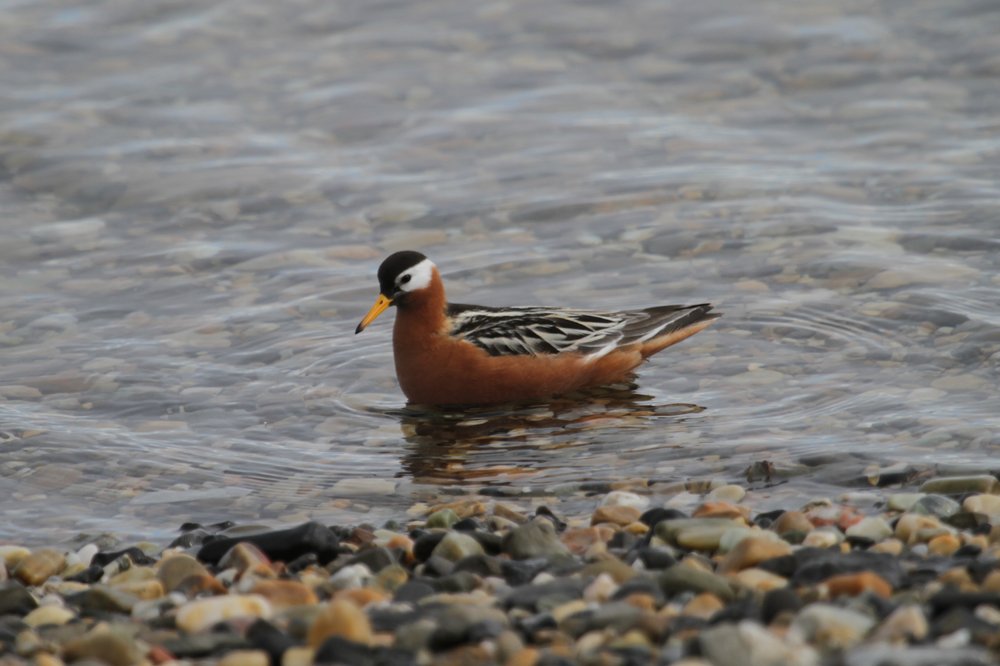 Red PhalaropeA few days later we came onto land in a beautiful harbor off of the Van Kevlenfjorden. There, a few of us launched into a hike along the water. Red Phalarope spun in circles in the water near us and reindeer trotted on the green land, which had just been liberated from snow. And wedded to the pebbles of the beach were plastic twine and bottle caps, chunks of plastic and nets. These nets tangle the reindeer, the birds. “Can we slow down and pick up all this crap?” I asked the guide. And so we did, gathering a good bag full of ocean junk.
Red PhalaropeA few days later we came onto land in a beautiful harbor off of the Van Kevlenfjorden. There, a few of us launched into a hike along the water. Red Phalarope spun in circles in the water near us and reindeer trotted on the green land, which had just been liberated from snow. And wedded to the pebbles of the beach were plastic twine and bottle caps, chunks of plastic and nets. These nets tangle the reindeer, the birds. “Can we slow down and pick up all this crap?” I asked the guide. And so we did, gathering a good bag full of ocean junk.
And I thought of the ways that picking up garbage is like birding. The more you look for birds, the more you see. It’s like playing Russian dolls with the natural world. And, once you start spotting garbage, you see it everywhere. At the next landing, all I could see was the plastic left behind or dumped overboard, and washed ashore.
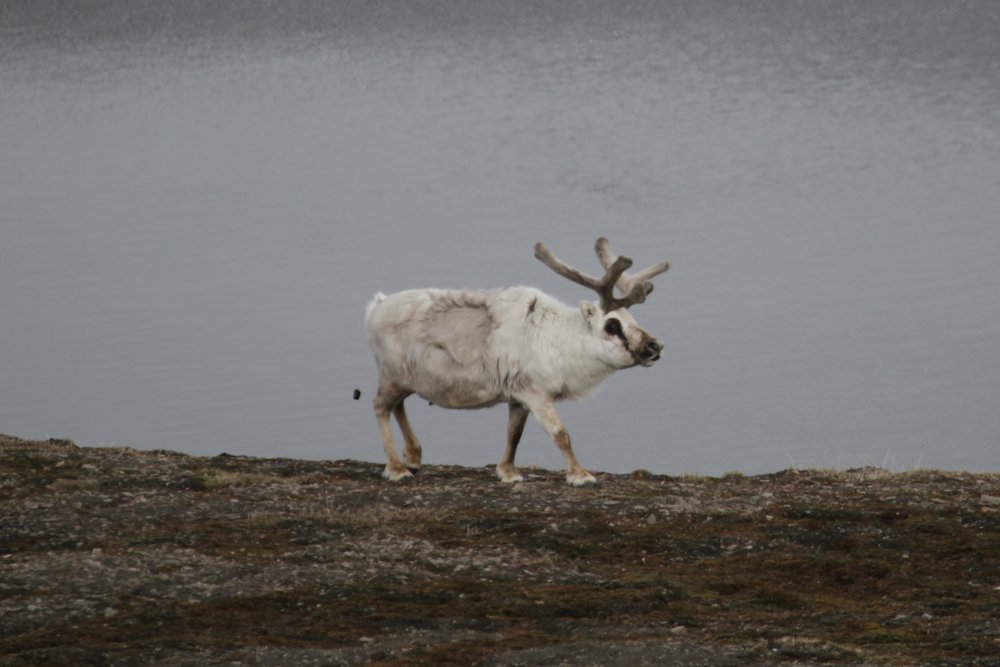 ReindeerAs I traveled through the Arctic, I was thinking about the early explorers, and what they experienced: what they saw and where they found their comfort in this cold, big landscape. My heroes are Amundsen and Nansen, both traveling at the end of the 19th and into the early 20th century. Neither saw a plastic bottle on shore (plastic was invented in 1907). But they must have seen debris from ships: logs, nets, ropes. But nothing on the scale I hauled off the beach.
ReindeerAs I traveled through the Arctic, I was thinking about the early explorers, and what they experienced: what they saw and where they found their comfort in this cold, big landscape. My heroes are Amundsen and Nansen, both traveling at the end of the 19th and into the early 20th century. Neither saw a plastic bottle on shore (plastic was invented in 1907). But they must have seen debris from ships: logs, nets, ropes. But nothing on the scale I hauled off the beach.
The plastics I gathered will be taken back to Longyearbyen and there, I am told, an artist will create something with these bags of stuff brought back from travelers around the island of Spitsbergen. I look forward to what is created from what is not wanted.
